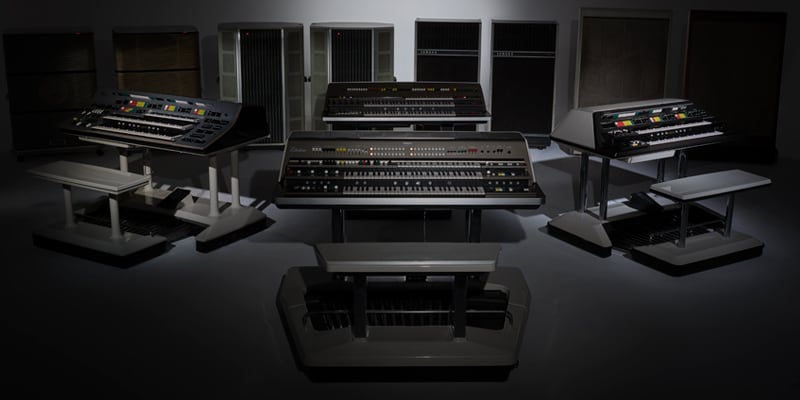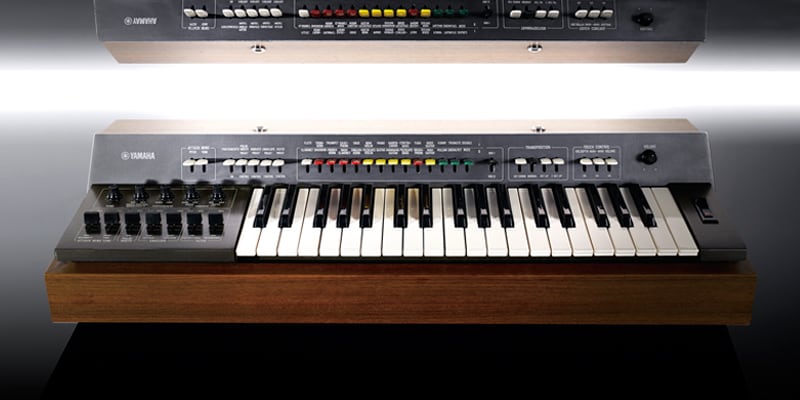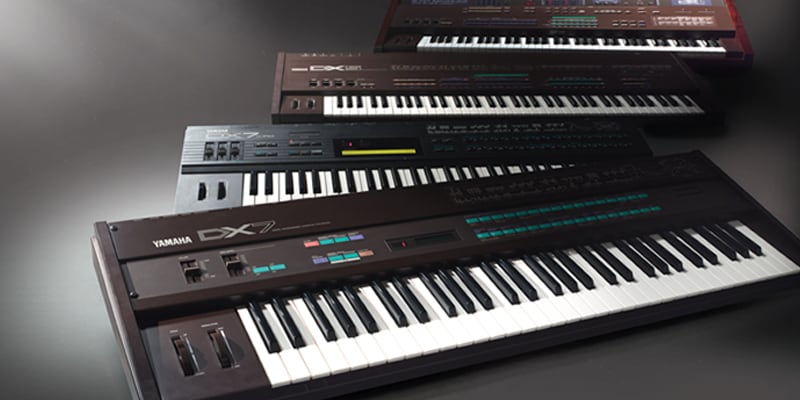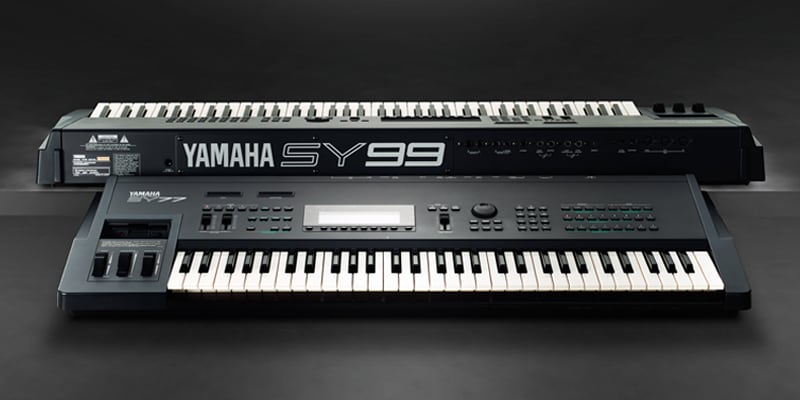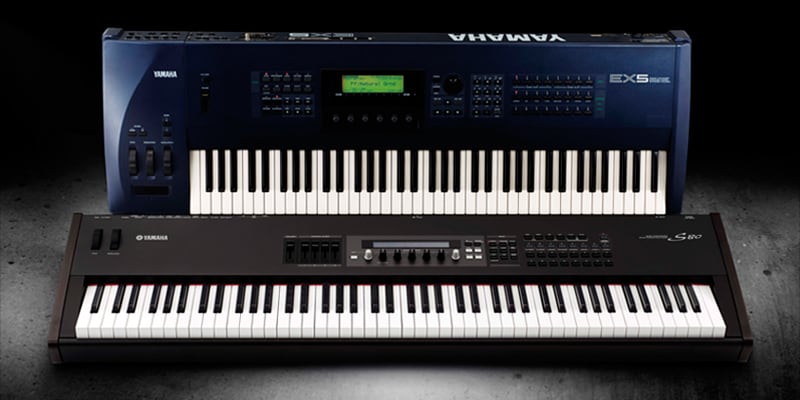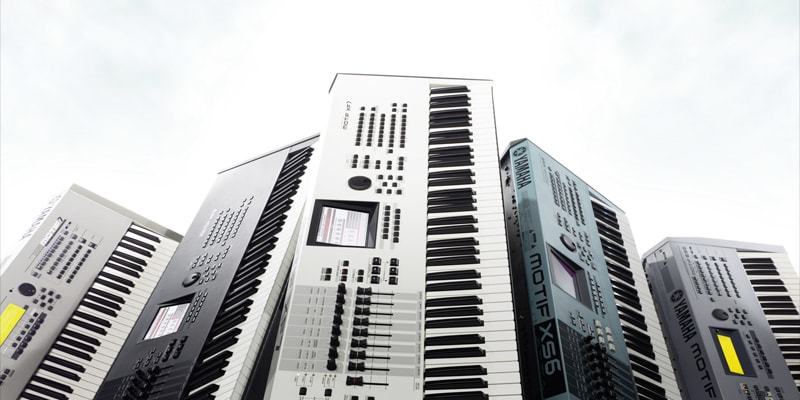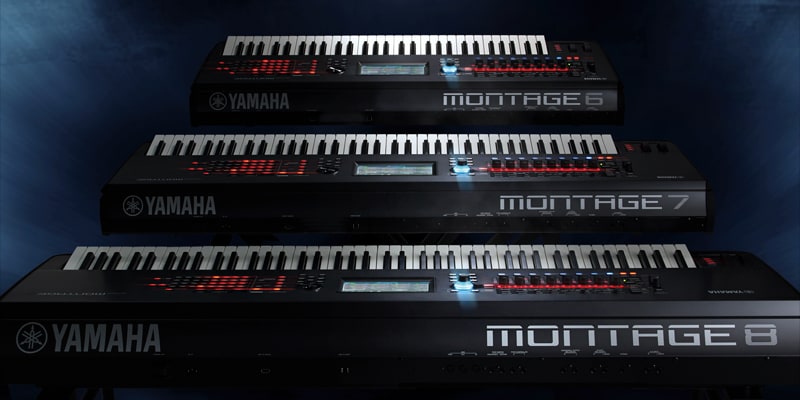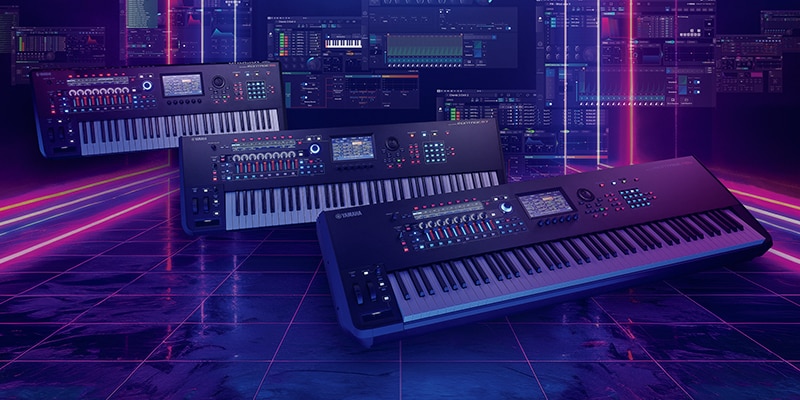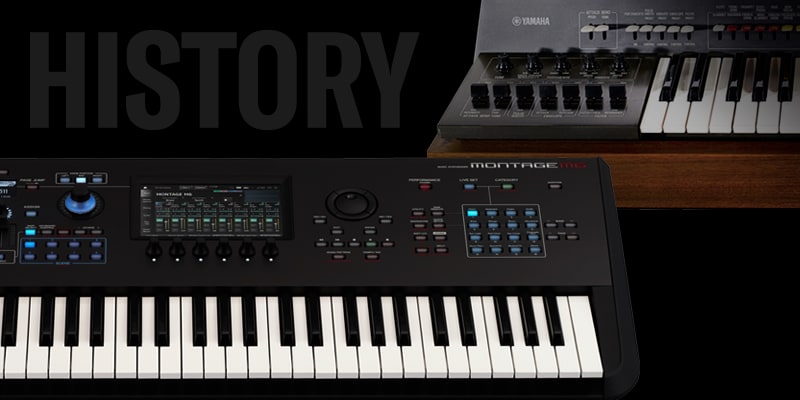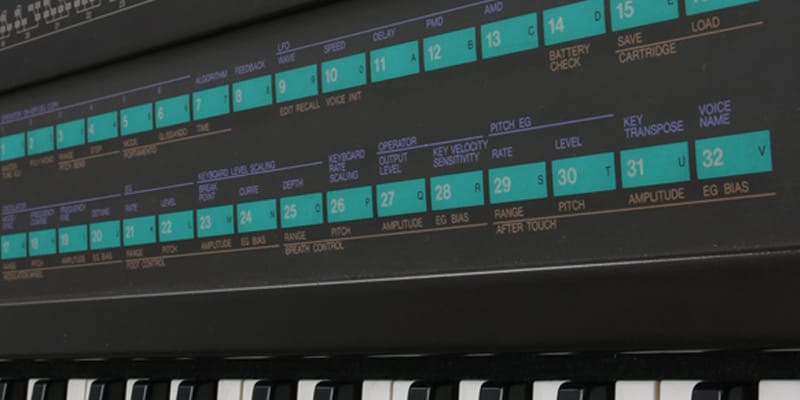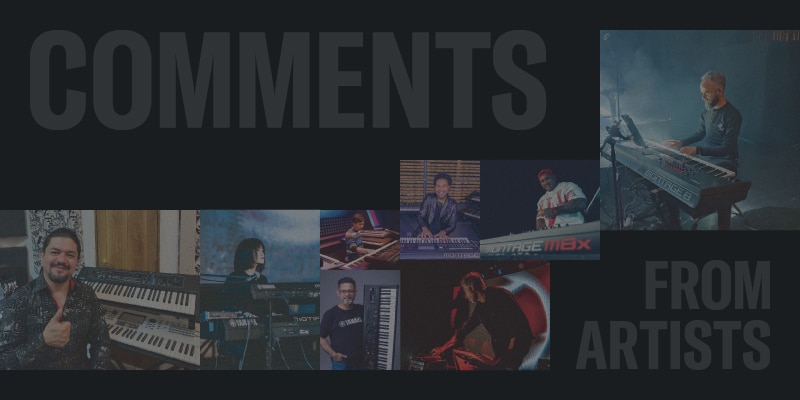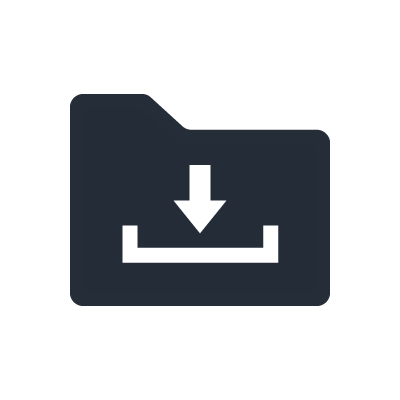Chapter 2: FM Tone Generators and the Dawn of Home Music Production
Great Advances in Semiconductor Technologies


The beginning of the 1980s saw an explosion in the popularity of semiconductor-based electronic components. Devices that simply had not been possible with earlier technologies appeared on the market in rapid succession. Terms such as "integrated circuit" and "large scale integration" began to show up on university entrance exams, and companies started producing electronic games based on this type of circuitry. The breakthroughs made in the field of semiconductors during those years were truly remarkable.
One of the more notable technologies made commercially viable by these rapid advances was the digital frequency-modulation (FM) tone generator. This sound creation method was originally developed at Stanford University in the United States, and Yamaha—the first company to recognize its true potential—signed an exclusive licensing contract with the university in 1973.

Our research team started working with FM tone generators as part of a scheme to switch over the Electone® to digital technologies, and by 1974—when the analog SY-1 Yamaha synth was released—we had already successfully completed a prototype instrument with a digital FM tone generator at its core. Unfortunately, due to the huge number of integrated circuits required by the semiconductor technologies of the time, and because of the difficulty in balancing size and function, it was not yet possible to bring this instrument to market. Yet as further advances were made in the field of semiconductors, we finally achieved an instrument with specifications we considered acceptable. And in April of 1981—seven years after the start of development—Yamaha released its first FM tone generator product in the F-70, a classic Electone model. This was followed one month later by the GS1 keyboard, an instrument intended for stage use.

The Yamaha GS1 can be heard all the way through Toto’s fourth studio album, released in 1982. Especially notable are natural-sounding metallic mallets and thick brass. FM tone generators excel at these types of Voices. In fact, legend has it that David Paich was inspired to write “Africa” by jamming with GS1 presets.

FM synthesis is notable for its ability to recreate sounds that are full of variety and rich in harmonics such as the electric piano, brass instruments, and glockenspiel. Sampling has now become the mainstay of tone generation. Because this technique makes use of actual recordings, we take it for granted that our synths can effortlessly reproduce the sounds of a vast array of different musical instruments. However, the analog synthesizers of the early 1980s were simply unable to produce certain kinds of voice—bell-type, metallic sounds being a notable example—and this made the FM sounds of the GS1 truly exceptional.

The GS1 was not actually marketed as a synthesizer, possibly because sounds could not be edited on the instrument itself. Voice cards allowed users to change the bank of 16 Voices the GS1 could produce, but a specialized programming device (see photo) was required for developers to create or modify these sounds. Truth be told, the ability to make Voices editable proved to be quite a hurdle in commercial synthesizers.
The User Interface Concept

The sounds produced by an analog synthesizer could be changed by adjusting the values of resistors and other electronic components that make up its tone generator circuit; therefore, knobs and faders containing variable resistors could be added to provide sound editing functionality. The way in which these controllers were arranged depended on the design and size of the synth itself, and instruments such as the CS-80 (introduced in Chapter 1) already needed a huge array of knobs. Digital synthesizers had many more sound-related parameters than their analog predecessors, so assigning a physical controller to each one would have been impractical.
It's also important to remember that digital synthesizers operated based on programs in much the same way as computers run on software. To produce a new sound, one simply needed to add the required program. However, if the parameters of the sounds were to be editable, then the synthesizer needed an editing program, which would require its own buttons and knobs for entering parameter values — or, in modern vernacular, its own user interface (UI).
One of the UIs most familiar to us is the computer's screen, keyboard, and mouse. Back in 1980, neither Windows nor Mac existed yet. The methods we have grown used to today—for example, working with a graphical interface and mouse or a touch-sensitive screen—were not available back then. Instead, users interfaced with their computers by entering commands and text using a keyboard. This presented a challenge in developing the digital synthesizer: creating a clear and simple UI that allowed musicians to interact with sound intuitively, even without any computer programming experience.
As a solution, our developers devised the new type of programmer shown below. This utilized a combination of lamps and buttons that the sound designer could use to confirm the parameters' previous settings when making edits – a crucial step in the development of the synthesizers of that era.
Arrival of the DX7 to Transform the Music Scene

Two years after prevailing against all odds to develop an FM tone generator, create a UI for programming and editing sounds, and successfully release the GS1, Yamaha introduced the world to its DX7 frequency modulation synthesizer. At the heart of the FM tone generator was the operator—a fundamental component used to generate and modify sound. Whereas the GS1 had four operators, the new DX7 featured six, allowing it to create much more elaborate sounds. What's more, this revolutionary synth also had built-in functionality for creating and editing sounds, with the capability to store these sounds on cartridge-type memory, all for around a tenth of the cost of the GS1. With all these groundbreaking features – at an affordable price – it’s hardly surprising that the DX7 had such a profound effect on the world of music.

At that time, a number of Yamaha departments were developing different instruments in parallel. Whereas the GS1 was preceded by the TRX100 prototype, the direct forerunner of the DX Series was a test model known as the Programmable Algorithm Music Synthesizer (PAMS). In recognition of this fact, the DX7 is identified as a Digital Programmable Algorithm Synthesizer on its top panel.
As its name suggests, the PAMS created sound based on various calculation algorithms—namely phase modulation, amplitude modulation, additive synthesis, and frequency modulation (FM)—and from the very start, the prototype supported the storing of programs in memory. However, this high level of freedom in sound design came at the price of a huge increase in the number of parameters required, meaning that the PAMS was not yet suitable for the average user.

To resolve this issue, Yamaha developers simplified the synth's tone generator design by having the modulator* and carrier* envelope generators share common parameters. They also reduced the number of algorithms—or operator combination patterns—to 32. This paved the way for completion of the original DX Series lineup, comprising the DX1, DX5, DX7, and DX9. Although four models were released at this time, five model codes—DX1, DX2, DX3, DX4, and DX5—were employed during development. The DX1 kept its code upon release—quite rare for Yamaha products—while the DX2 and the DX3 together became the DX5. The DX4 and the DX5 development models came to market as the DX7 and the DX9, respectively.

The DX7 was an instant global sensation. Both the instrument and its distinct sound became driving forces of 80s pop music, and many of its technologies and features forever influenced how synths would be developed.
The first of these was an LCD screen comprising two lines of 16 characters each. Prior to the DX7, synthesizer parameter values were typically confirmed from the positions of knobs and sliders, meaning that there was no way to accurately check parameter settings or display voice names. With the arrival of the LCD screen, it became possible to display all types of information, and the tradition of naming original voices was born. Meanwhile, the ability to recall and edit individual parameters one at a time on the LCD screen eliminated the need for numerous controllers on the instrument’s surface. The neat and tidy control panel of the DX7 would not have been possible without this screen. This clear distinction from the synthesizers of the past was yet another factor behind its overwhelming popularity.

The next groundbreaking feature of the DX7 was the use of memory cartridges to store and recall voices—a feature that was only possible thanks to the synth's digital design. Whereas the GS1 used magnetic voice cards, Yamaha chose digital memory cartridges for the DX Series, as they are immune to powerful magnetic fields from speakers and other equipment. The DX7 stored 32 voices internally, with an extra 64 voices when a ROM cartridge plugged into its cartridge slot. RAM cartridges, meanwhile, could be used to write and recall up to 32 original voices. This ability to increase the number of voices was unique to the digital synthesizer, and our convenient cartridge-based system made professional musicians’ sounds accessible to everyone. Back in the era of the analog synth, the only way to reproduce the sounds used by pros was to copy the positions of every knob. Even then, it was almost impossible to get the exact same settings. DX7 owners, however, could easily purchase cartridges containing the actual sounds of famous synth players. This innovative approach not only allowed amateur musicians to own the same instrument as their synth heroes, but to also play the exact same sounds.
Also worthy of mention are the remarkable improvements Yamaha developers achieved in keyboard performance—now all the more important in controlling the highly complex sounds that FM made possible. Working in combination with a touch-sensitive keyboard, the FM tone generator could modulate sounds in a myriad of different ways. In order to get the most out of this technology, the DX7 came equipped with our FS Keybed. Although originally developed for the Electone, this keyboard became a standard component in flagship Yamaha synths for over two decades, and was beloved by a great many musicians.
Last but not least is the DX7's support for MIDI, a technical standard introduced in 1982 that allows musical instruments exchange digital information. This includes not only keyboard data, but also information from the sustain pedal, volume pedal, and other performance-related controllers.
The functionality was equally innovative. For example, using a MIDI sequencer—a device that plays synths automatically by sending MIDI data—users could recreate another musician’s performance note for note, and easily create robotic-sounding parts or high-speed phrases that would be challenging for a person to play.
Another feature that put the DX7 in the spotlight was its ability to produce innovative, cutting-edge music such as the dance and techno sounds born in the 80s — music that was achieved by combining robotic MIDI performances with a hard synth bass that possessed a distinctive FM sound.
With these and other trailblazing features, the DX7 digital synthesizer shook up both the performance and business sides of the music industry and greatly influenced both the pop music of the day and the shape of synths to come.
The Changing World of the Synthesizer
Following the introduction of the DX7, the world of the synth underwent major changes. The addition of MIDI support not only made it possible for musical parts to be played automatically, but it also gave rise to the concept of tone-generator expansion for live performers. For example, two DX7s could be made to play the same electric piano part, yet raising the pitch of one of these instruments ever so slightly resulted in a chorus-type effect, making the overall sound much richer. This approach could be used on an even greater numbers of synths, but because nobody could play three or four synths simultaneously, we realized that DX7s used solely for expansion didn’t need a keyboard. Our solution was the TX series of keyboard-less tone generator modules.
The DX7 was followed by many more of these products, such as the rack-mounted TX816 tone generator capable of producing extremely rich sounds, and the TX7, which packaged a DX7 tone generator in a highly distinctive case. The luxurious FM sounds they delivered through tone-generator expansion also became an indispensable part of the music scene of the day, earning these products an excellent reputation.
The Yamaha DX series continued to evolve with advances in technology. The DX7 II had an aluminum body for reduced weight and greatly improved portability. A disk drive was added later for 3.5-inch floppy disks that were popular at the time. Further development of the series brought even more creative features, such as dual output channels with support for stereo panning, and micro-tuning that allowed musicians to use tuning systems other than equal temperament, such as Arabic musical scales. Meanwhile, the DX100 mini keyboard model featured a number of innovations specifically for the player: for example, the pitch bend wheel was moved to the top-left corner, and when played standing up using a strap, the instrument's pitch-bend direction could be reversed so that notes could be bent in the same fashion as a guitar.
The DX series not only took the music world of the ‘80s by storm, it also became a driving force in shaping the modern digital synthesizer's UI and primary functionality as an instrument.
Onward to Home Music Production
Up until the ‘80s, amateur musicians performed their music live, but the world of recording was mostly inhabited by professionals. That would change over the course of the decade with the introduction of the multitrack recorder (MTR)—a device capable of recording four individual tracks on a standard music cassette. The MTR became extremely popular, and this made it possible for anyone to produce multitrack recordings from the comfort of home, regardless of ability.
In the beginning, the standard MTR process was to record the rhythm first using a drum machine, and to then layer bass, guitar, and keyboard tracks on top to complete the song. As MIDI-compatible instruments grew in popularity, musicians could sync their sequencers and drum machines, and MIDI synths like those in the DX series were commonly used for both bass and chord tracks. However, the DX7 could only produce one voice at a time, so two synths were needed if, for example, bass and electric piano had to be played simultaneously.
Our solution was the multi-part tone generator. MIDI data could be assigned to specific channels, so with a MIDI sequencer like a QX series device, performance data could be transmitted across different channels, allowing bass, piano, and marimba voices to be played simultaneously on channels 1, 2, and 3, respectively. A multi-channel tone generator receiving this data would assign a different voice to each channel, effectively integrating the equivalent of three individual synthesizers into a single unit.
This led to the development of the TX81Z tone generator module—a revolutionary device containing the equivalent of eight FM synthesizers, each with four dedicated operators. All eight of the FM tone generators could also be set to the same channel to produce richer, denser sounds. Furthermore, for the first time, the operators were equipped with waveforms other than the sine wave so that a more diverse range of sounds could be generated. For this reason, the TX81Z is often considered a hidden gem among synth modules.
Around this time, synths with built-in MIDI sequencers began to appear on the market allowing musicians to play all parts simultaneously —including rhythm, bass, and chord-type instruments—using one synthesizer. Developed to address this need, the Yamaha V-50 combined the TX81Z with a keyboard, a MIDI sequencer, a rhythm machine based on PCM tone generation, and digital effects processors. This instrument transcended the boundaries of the digital synth, propelling it into the workstation era.
In less than a decade, between the GS1 of 1981 and the V-50 of 1989, our digital synthesizers evolved from basic performance instruments to full-fledged music workstations. Without a doubt, the ‘80s was one of the most exciting and dynamic periods in the history of the Yamaha synthesizer.















